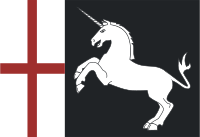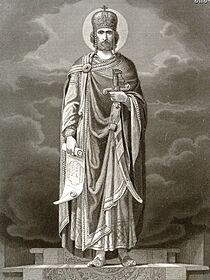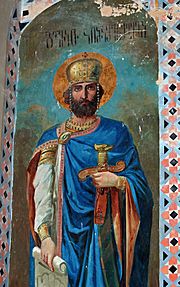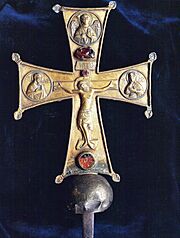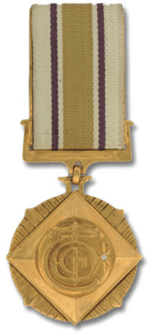David IV facts for kids
Quick facts for kids David IV the Builderდავით IV აღმაშენებელი |
|
|---|---|
| King of Kings of Georgia | |
David IV on 12th century icon at Saint Catherine's Monastery
|
|
| King of Georgia (more...) | |
| Reign | 1089–1125 |
| Predecessor | George II |
| Successor | Demetrius I |
| Born | 1073 Kutaisi |
| Died | 1125 (aged 51–52) Tbilisi |
| Burial | Gelati Monastery |
| Spouse | Rusudan of Armenia Gurandukht |
| Issue Among others |
Demetrius I of Georgia |
| Dynasty | Bagrationi |
| Father | George II of Georgia |
| Mother | Elene |
| Religion | Georgian Orthodox Church |
| Khelrtva | |
David IV, also known as David the Builder (Georgian: დავით IV აღმაშენებელი, romanized: davit IV aghmashenebeli), was a powerful king of the Kingdom of Georgia. He was born in 1073 and ruled from 1089 until his death in 1125. He belonged to the Bagrationi dynasty.
Many people consider David the Builder to be the greatest Georgian ruler ever. He successfully pushed the Seljuk Turks out of Georgia. A major victory was the Battle of Didgori in 1121. He made big changes to the army and how the country was run. This helped him unite Georgia and control much of the Caucasus region. He was also a strong supporter of the Georgian Orthodox Church and Christian culture. The Georgian Orthodox Church later made him a saint.
Contents
Why He Was Called "The Builder"
David's nickname, Aghmashenebeli (აღმაშენებელი), means "the Builder" or "the Restorer." This name first appeared in the 1400s. It became very popular in the 1600s and 1700s. Some old writings also call him "the Great."
He is usually called David IV. This is because there were other important Davids in the Bagrationi family before him. These included David I, David II, and David III.
His Early Life

David was born around 1073. He became king when he was 16 years old, in 1089. He was the only son of King George II of Georgia. His mother's name was Elene.
David's family was very important in the Caucasus. His grandmother was a princess from Alania. His aunt, Marta-Maria, married two different Byzantine Emperors.
When David was young, Georgia faced big problems. The Seljuk Turks were invading the country. They had already defeated the Byzantine Empire in 1071. Many parts of Georgia became empty because of these attacks. David's father, King George II, had to make peace with the Turks. He even had to pay them tribute. The old capital, Tbilisi, was still controlled by Muslim rulers.
Becoming King
David grew up during a time of war and destruction. The Seljuk attacks caused a lot of damage. People were unhappy with King George II. This led to young David becoming king in 1089.
The old stories don't say exactly how David took power. Some historians think it was a "palace revolution." Others believe King George II was pressured to step down. David's own chronicler says his father crowned him. This might mean they ruled together for a while. However, David quickly took full control.
Many Georgians were happy when David became king. They saw it as a chance to free their country. Georgia was struggling politically, economically, and culturally.
Making Georgia Strong Again
David IV became king at just 16. Georgia had lost much of its land. It was mainly limited to Abkhazia and Kartli. Turkish raids caused a lot of damage. Georgia had to pay tribute to the Seljuks. The country's central government was weak. David's goal was to unite and strengthen Georgia.
Stopping the Turkish Attacks
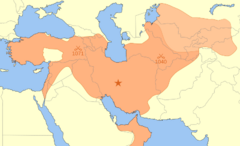
David's first step was to stop the Turkish raids. Georgia had been forced to accept Seljuk rule since 1080. They had to pay yearly tribute. But the Turks still kept attacking. Many Turkish nomadic tribes even settled in Georgia. This caused problems for the Georgian people.
To push the Turks out, David rebuilt his army. He created small, strong groups of soldiers. These groups were made of lower nobles and peasants. They used surprise attacks against Muslim settlements. Soon, David stopped the Seljuk attacks. He also started attacking the Turkoman nomads.
Eventually, David made a truce with the Turks. He agreed to pay tribute if the raids stopped completely. But he also slowly forced the Turkoman nomads out of the country. This allowed Georgians to return to their villages. Life in Georgia got better, and the economy grew. By 1099, David was strong enough to stop paying tribute to the Turks.
Working with the Byzantine Empire
For many years, Georgia and the Byzantine Empire had problems. They fought over land and supported different rulers. But after the Battle of Manzikert in 1071, both empires were weaker. They decided to work together against the Seljuks.
David IV changed Georgia's policy towards Byzantium. He wanted Georgia to be seen as an equal. He even refused a special Byzantine title. David also supported Theodore Gabras, who tried to create an independent state. Theodore was married to David's aunt. David also started using the title "ruler of the East and the West." This showed he believed Georgia had great influence.
Despite some disagreements, relations improved. David's daughter, Kata, married a Byzantine prince in 1116. Georgian agents even helped a new Byzantine emperor, John II Komnenos, take power. The Georgian chronicles called David and John "brothers." Both empires also worked together on cultural projects, like renovating the Mokvi Cathedral.
Dealing with Nobles
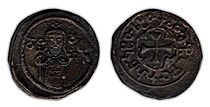
After stopping the Turkish attacks, David wanted to make his central government stronger. Some nobles, like Liparit V of Kldekari, tried to plot against him. David imprisoned Liparit in 1093. He released him later, but Liparit plotted again. David then exiled him to the Byzantine Empire in 1098. After Liparit's son died, David took control of their lands in 1103.
David also punished other rebellious nobles. He added their lands to the royal estates. He replaced old officials with loyal advisors, often from lower noble families. This helped him gain more control.
Taking Back Kakheti-Hereti
David wanted to unite all of Georgia. The Kingdom of Kakheti-Hereti had become independent. In 1101, David attacked and captured the Zedazeni fortress.
When King Kvirike IV of Kakheti died in 1102, his nephew Aghsartan II took over. Aghsartan became Muslim and allied with the Seljuks. But his own nobles were unhappy. In 1104, they captured Aghsartan and gave him to David IV. David then easily took control of Kakheti-Hereti.
The Seljuks were angry about losing Kakheti-Hereti. The Atabeg of Ganja declared war. The Georgian army, led by David, completely defeated the Seljuks at the Battle of Ertsukhi. David's chronicler said he fought bravely, like the biblical David.
Changes at Home
David made many changes to Georgia's government and church. In 1103, he called a big meeting, the Council of Ruisi-Urbnisi. This council aimed to fix problems in the Georgian Orthodox Church, like corruption. David wanted to replace dishonest priests with good ones. This council helped the king gain more support. It also strengthened Georgia's national identity, which was based on Christianity.
David also changed how the government worked. He gave more power to the Mtsignobartukhutsesi, a position like a chancellor. This person also became the bishop of Chkondidi, making them very powerful. Other officials were appointed to lead different parts of the government. These included a minister for internal affairs, a military head, and a finance minister.
David also created the Darbazi, a High Council of State. This council included important church leaders and officials. He also set up the Saadjo kari, a kind of Supreme Court. The king himself sometimes came to this court to make sure justice was served.
David also reformed the army. He created a personal guard called the monaspa, loyal only to him. He got rid of old feudal armies. He divided the army into garrisons to protect towns and a main army that was always ready to fight. Discipline was very strict. As Georgia's economy grew, more people joined the army.
Military Victories
Taking Back Lost Lands
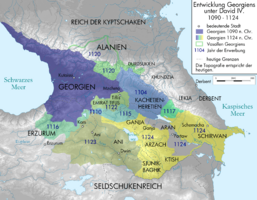
In 1110, Georgian forces, led by George of Chqondidi, recaptured the town of Samshvilde. The Seljuks then left many of their occupied areas. This allowed Georgian troops to take more land.
The Seljuk Sultan Muhammad I Tapar sent a huge army to invade Georgia. David IV met them with only 1,500 men. The two armies fought at the Battle of Trialeti. Despite being outnumbered, Georgia won a big victory. This stopped the Seljuks from launching major attacks for years.
In 1115, Georgian forces captured Rustavi, a strong Seljuk fort. In 1116, David attacked the Turks in Tao and took control of Tao-Klarjeti. In 1117, David's son, Demetrius, led a successful campaign in Shirvan. He captured a castle and returned with riches.
In 1118, David avenged the death of a Georgian nobleman by defeating the Seljuks at the Battle of Rakhsi. He also captured the Armenian fortresses of Lori and Agarak. This marked the start of Georgia's conquest of Armenia. David then focused on strengthening his army.
Alliances with North Caucasus Tribes
David wanted to secure the entire Caucasus region against Muslim invaders. He built strong relationships with tribes in the North Caucasus.
Around 1107, David married Gurandukht, the daughter of the Kipchak khan Otrok. This alliance helped him get military aid. The Kipchaks were known for being brave and fierce fighters. David offered Otrok help against his enemies.
In 1118, David crossed the Greater Caucasus mountains to meet Otrok. He convinced Otrok to send thousands of Kipchak soldiers to help fight the Seljuks. The Kipchaks were stuck fighting the Alans. So, David led a campaign against Alania himself. He quickly took their forts and made them loyal to him.
David brought about 40,000 Kipchak families (around 200,000 people) to Georgia. They settled in areas where many Georgians had been killed by the Seljuks. They also brought Alanian and Kurdish mercenaries. These new settlers became Christians, learned Georgian, and mixed with the local people. Each family had to provide at least one soldier. This increased the Georgian army to about 60,000 men.
David also spread Georgian culture and Orthodoxy in the North Caucasus. He helped build churches and develop economies there. He made local rulers his vassals. He also controlled important mountain passes, like Darial, to secure routes.
Battles to Drive Out the Turks
In February 1120, David attacked the Seljuks near the Mtkvari river. He completely destroyed them at the Battle of Botora. Only a few managed to escape.
Two months later, David attacked Shirvan again. He captured the city of Qabala and returned with gold. He also encouraged his vassal from Derbent to invade Shirvan. This led to a war where the Shirvanshah was killed. David then placed his own son-in-law, Manuchihr III, in charge of Shirvan.
In winter 1120-1121, the Turks launched a big attack. David was in Abkhazia. He quickly returned and led his soldiers through a difficult mountain pass. The Georgian troops attacked the Turks and drove them out of Kartli by March 1121.
The Seljuks then occupied Barda. David crossed the river and attacked them again. The Muslims were very weakened by these defeats.
The Battle of Didgori
After many defeats, Muslim leaders asked the Seljuk Sultan Mahmud II for help. Mahmud II declared a jihad (holy war) against Georgia. He gathered a huge army from all over the Middle East. Sources say this army had between 200,000 and 600,000 soldiers. General Ilghazi, famous for fighting Crusaders, led this massive force.
David IV knew this battle was crucial. He gathered his own army: 40,000 Georgians, 15,000 Kipchaks, 5,000 Alans, and 200 to 1,000 Crusaders. In total, about 60,000 troops. David let the Turks enter Georgia. He then met them near Manglisi, at the foot of Mount Didgori, on August 12, 1121.
Before the battle, King David encouraged his soldiers:
“Soldiers of Christ! If we fight bravely for our Faith, we will defeat not only the devil’s servants, but the devil himself. We will gain the greatest weapon of spiritual warfare when we make a covenant with the Almighty God and vow that we would rather die for His love than escape from the enemy. And if any one of us should wish to retreat, let us take branches and block the entrance to the gorge to prevent this. When the enemy approaches, let us attack fiercely!”
David personally led the attack. The Georgians fought fiercely. They forced the larger Muslim army to retreat. David launched more attacks, confusing the enemy. The Muslim army collapsed. This victory was a huge defeat for the Seljuk Empire. Stories say Saint George himself led the Georgian forces. Only General Ilghazi and his son-in-law escaped. This victory at Didgori gave hope to the Crusaders in the West.
Relations with the Middle East
David IV also had good relations with the Middle East. He was close to Crusader leaders, like King Baldwin I of Jerusalem. They exchanged gifts. Crusader soldiers even fought with David at the Battle of Didgori. Some sources say Georgian forces helped in the Siege of Jerusalem in 1099.
David was known in the Arab world for being kind to his Muslim subjects. He even knew the Quran. A coin with Arabic writing called him "King of Kings David, the Sword of the Messiah." This coin was used throughout the Middle East.
His Last Years
Freeing Tbilisi

After the Battle of Didgori, David IV wanted to free the Caucasus from Muslim rule. The Emirate of Tbilisi was the last Muslim area in Georgia. It included Tbilisi and Dmanisi.
In June 1121, David had already besieged Tbilisi. But he only asked for formal loyalty and tribute then. After defeating the Seljuks, he focused on taking Tbilisi. In February 1122, after a short siege, David captured the city. He entered Tbilisi and removed the Muslim leaders. Arab historians said David respected Muslims more than previous Muslim rulers.
David moved the capital from Kutaisi back to Tbilisi. This brought a cultural rebirth to the city. He built palaces and cultural centers. He even built a special palace for Muslim poets. However, there were still some clashes between Muslims and Christians. David kept the post of emir, but as a city governor.
In March 1124, David captured Dmanisi, the last Muslim stronghold in Georgia. This completed the unification of Georgia.
Conquering Shirvan
Taking Tbilisi made Georgia a protector of Christianity in the Caucasus. David wanted to reduce Muslim influence in the region. This included Shirvan, which was still too independent. In 1120, David had replaced its ruler with his son-in-law, Manuchihr III.
Sultan Mahmud II attacked Shirvan in November 1122. He captured Tabriz and then Shamakhi, the capital. Mahmud captured Manuchihr III and sent a challenging letter to David.
David gathered an army of 50,000 men, mostly Kipchaks. Mahmud II hid in Shamakhi. David refused to let him leave peacefully. He defeated a Seljuk army and then besieged Shamakhi. The Seljuk sultan quickly left the city.
In June 1123, David invaded Shirvan. He captured Gulistan. He then removed his son-in-law and directly took over Shirvan. This made Georgia its largest ever. It stretched from the Black Sea to the Caspian Sea. It also went from the North Caucasus to Northern Armenia.
Georgia's Power in the Caucasus
Taking Tbilisi and Shirvan completed Georgia's unification. It also made Georgia a strong protector of Christianity in the region. Other peoples in the South Caucasus asked David for help against Muslims. David wanted to secure the whole Caucasus under Georgian rule.
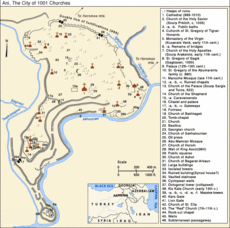
In May 1124, Georgian troops captured many Armenian strongholds. The next month, David destroyed Seljuk bases in other regions. The nobles of Ani, the old Armenian capital, asked David for help. Ani had been controlled by Muslims since 1064. On August 20, 1124, they offered to surrender the city.
David entered Armenia with 60,000 men. The Armenian people opened the gates of Ani. The Georgian army captured the Muslim emir and sent him to Abkhazia. The region was given to Georgian nobles. Many Armenian families moved to Georgia. David even built the city of Gori for them. Northern Armenia became part of the Kingdom of Georgia.
Georgia now controlled the entire Caucasus culturally, spiritually, and politically. David's official title showed this power. It called him "King of Kings, of the Abkhazians, Iberians, Ranis, Kakhetians, Armenians, of Shaki, Alania and the Rus, Sword of the Messiah, emperor (basileus) of all the East, the invincible, servant and defender of God, the Orthodox king."
Even in his old age, David continued to fight. In April 1124, he took the town of Chabran. He also defeated a North Caucasian army. In September, he strengthened his power in Hereti and Kakheti. In January 1125, shortly before his death, David defeated another Muslim attack.
Death and Burial
His Death
David IV planned more campaigns, but he became ill. He died on January 24, 1125, in his capital, Tbilisi. He had ruled for 34 years. He named his oldest son, Demetrius, as his successor. David was buried at the Gelati Monastery. He asked to be buried at the main entrance. This way, everyone entering the monastery would step over his tomb.
His Burial Place
A tombstone at the entrance of Gelati monastery is believed to be David IV's. It has an old Georgian inscription. While not fully proven, this belief has been strong since the 1800s. The inscription says: "Christ! This is my resting place for eternity. It pleases me; here I shall dwell."
His Personal Life
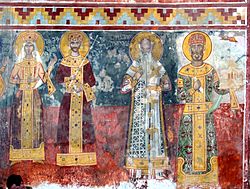
The Georgian Chronicles tell us about David IV's life and personality. He was a very religious king. He spent time studying the Bible. He wrote "Hymns of Repentance" around 1120. In these hymns, he saw himself like the biblical David. He also shared the strong faith of the European Crusaders.
David the Builder also did a lot of charity work. He built hospitals for the sick. He sometimes visited them himself. He would care for them, talk to them, and give them money.
The king had several homes. His main palaces were in Kutaisi and Tbilisi. He also had homes in Tsaghoulistavi and Abkhazia. He often spent winters in Abkhazia. David also loved hunting deer and wild boar.
King David cared deeply about education. He sent children to the Byzantine Empire to learn languages. Many of these students became famous scholars.
David's chronicler said he "knew the deeds better than any other king." He loved theology, astrology, and history. He even took his books with him on campaigns. He read Persian poetry and the Qur'an.
During David's time, there were many schools and academies in Georgia. The Gelati Academy was especially important. David's historian called it "a second Jerusalem" and "a second Athens" for learning. The Ikalto academy was another important center.
His Family
David IV had two wives. One was an Armenian princess, whose name is not known. The other was Gurandukht, a Cuman-Kipchak princess.
David IV's children included:
- Demetrius I of Georgia (born around 1093, died 1156), who became King of Georgia.
- Princess Tamar (died after 1161), who married Manuchihr III of Shirvan. She later became a nun.
- Princess Kata, who married into the Byzantine imperial family around 1116.
- Prince Zurab, about whom little is known.
- Prince George, mentioned in an Armenian chronicle.
- Prince Vakhtang (1118–1138), who was involved in a plot against his half-brother Demetrius I.
- Princess Rusudan, who married into the family of Alan kings.
His Legacy
Georgian history sees David IV as one of its greatest kings. His rule marked the start of the Georgian Golden Age. This was a time of great success for the Kingdom of Georgia. His actions earned him the title "the Builder." The poet Ioane Shavteli praised him in his writings.
David the Builder is especially remembered for defending Georgia against the Seljuks.
The "Order of David the Builder" is a special award given in Georgia today. It honors people who have made great contributions to the country. This includes fighting for independence and helping Georgia develop.
Later Georgian kings respected David IV greatly. His reputation lasted for centuries. For example, King Bagrat V gave a special coat of mail that belonged to David the Builder to Timur. Timur was so impressed that he freed Bagrat. More recently, Georgian leaders have looked to David IV as a role model.
The airport in Kutaisi is named David the Builder Kutaisi International Airport. The National Defence Academy also bears his name.
Many monuments, buildings, and streets in Georgia are named after David IV. A famous statue of him is in Tbilisi. A university was opened in his name in 1991. There is also a military award dedicated to him.
David IV is considered a saint by Orthodox Churches. He is celebrated on January 24 (or January 26 in the East). Many churches are named after him, including one in the United States.
See also
 In Spanish: David IV de Georgia para niños
In Spanish: David IV de Georgia para niños
- List of monarchs of Georgia
- Georgian monarchs family tree
- Kipchaks in Georgia
- Family of David IV of Georgia


